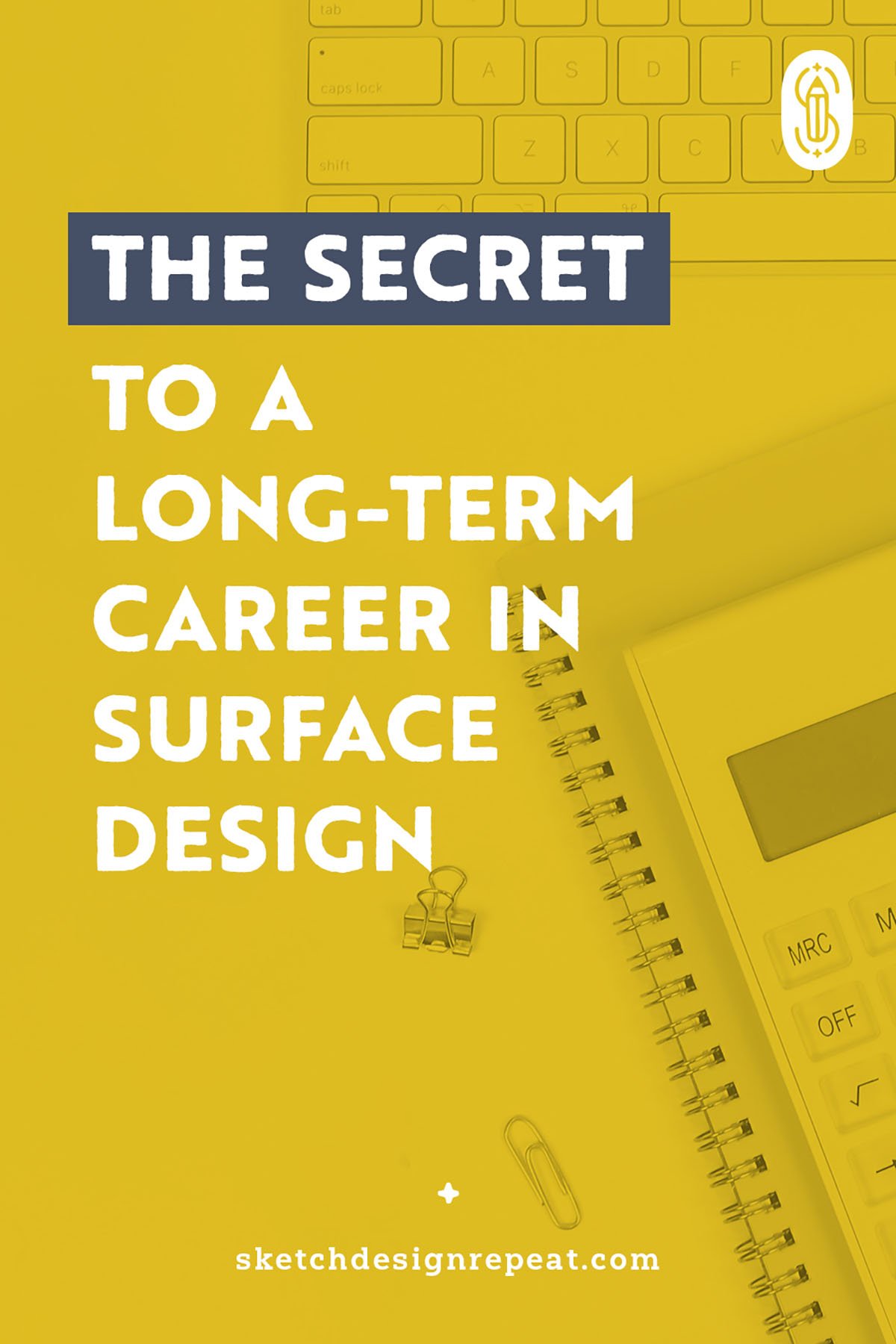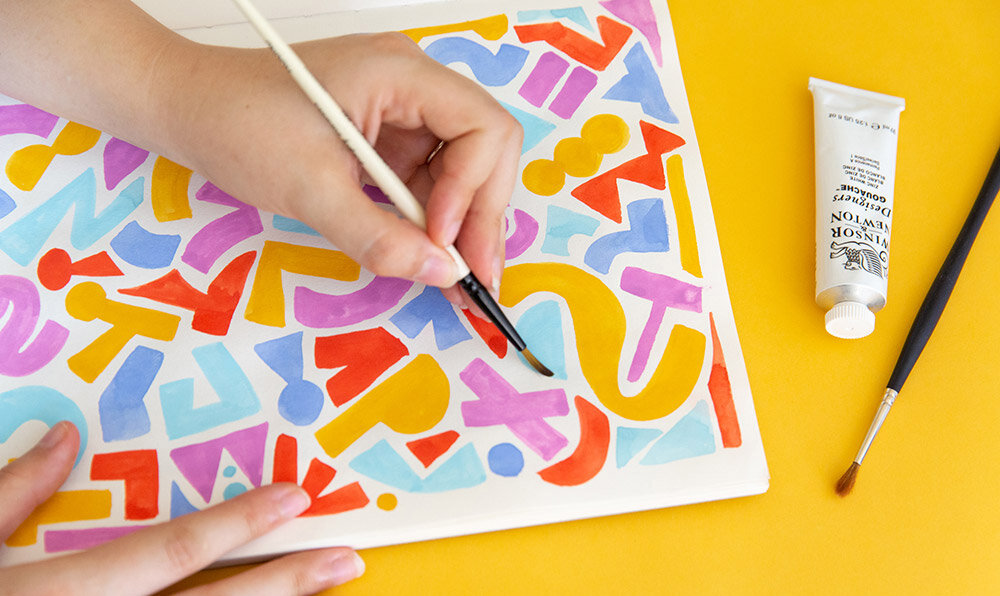There’s many different ways to build a surface design portfolio and you don’t always have to follow the advice you’ve been given by experts and educators (myself included). Because the best way to build a portfolio is to find what works for YOU.
But that doesn’t mean there still aren’t a few guiding principles you should consider to help make your portfolio ready for the art licensing world.

Most of the time though this discussion about portfolios focuses on what format and themes you need to include:
Do you need stand-alone illustrations or hand lettering?
Does a pattern have to be a technical repeat?
Will you follow trends?
What about Christmas or florals or other evergreen themes that make your portfolio well-rounded?
And while I think those things are extremely worthwhile when you’re developing your designs, there are two important pieces I find are often missing from the discussion…
1. Your art should reflect the kind of work you want.
This might seem a bit obvious. Still, I see a lot of artists who struggle with things they “have to add to their portfolio” like hand lettering or large collections but they never consider whether that type of artwork is what’s being used by the companies they want to work with.
I always advocate for choosing at least a few different markets for your art as it broadens the likelihood of your art being licensed on multiple products, but that doesn’t mean you have to do all the things for ALL markets.
Instead, niche down and focus on just a few you’re really excited about and then do some research and really look at what companies in those markets are selling:
Into home decor and wallpaper? Well, then you probably don’t need a lot of character artwork or greeting card type illustrations in your portfolio.
Like bolt fabric and gift wrap? Then maybe focus on a pattern-heavy portfolio and spot illustrations because detailed illustrations will be less important.
So instead of trying to be all things to all companies, get clear on the type of products you want to see your art on and focus your attention on building a portfolio to match because your portfolio will be much more marketable if you do.

2. Your art should be easy and fun for you to create.
One of my favorite expressions is “When in doubt, go for low-hanging fruit” and it means to focus on the things that are easiest to accomplish so you can maximize your results. It’s mostly used as a business phrase, but I think it also applies to art.
Because if you pay attention to what themes you come back to time and again OR which mediums you prefer to work with, it will make your art-making so much more enjoyable than if you try and force yourself to use an art medium or create themes that are not intuitive for you.
Now I’m not saying you should never experiment with new techniques and programs – in fact, I find that’s a wonderful way to get out of a creative slump. But by focusing on creating what you like to create and using the tools you like to use most, designing will likely be a far less stressful endeavor for you.
Especially since surface design is a slow-growth business, it’s important to lean into your unique way of designing because it’ll be a more sustainable way for you to build your portfolio long-term and be less likely to get frustrated or overwhelmed.
So when in doubt, go for the low-hanging fruit!
Whether or not you heed the many pieces of portfolio-building advice I share with you here on the blog, in Pitch Your Portfolio, or any of my Skillshare classes, I hope you’ll at least take the advice in THIS post to heart.
Because if you do, your artwork will be much more marketable and sustainable for you long-term – and that’s why they’re so important!
And if you’re more of a visual/auditory learner (totally understand because I am too), I went live on Instagram last week to talk about the 3×3 challenge, but also to discuss this same topic and you can catch the replay here (starting at the 5:42 mark).
As always, this is great advice. They are so obvious, but in this crazy industry we have information flying at us from every which way and it is overwhelming. You are a strong and steady guidepost to follow. Thank you for sharing it.
Thank You. Your honesty and Will to change our creative life is incredible
More great advice. Thanks for sharing! I always worry about the fact that I’m not great at certain design styles, but then they are not the styles I enjoy creating. Your advice of only putting the style of work you want to do in the future in your portfolio has been so helpful in boosting my confidence and fighting the dreaded imposter syndrome. Thanks Shannon!
Oh, I probably missed it but if I still have a chance I’d love to participate 👍
Hi Elina! Thanks so much for your interest in our 3×3 Design Challenge, but sign-ups for this year’s round have closed. Be sure to subscribe to the SDR newsletter so you’ll be among the first to know when we bring it back: https://sketchdesignrepeat.com/newsletter